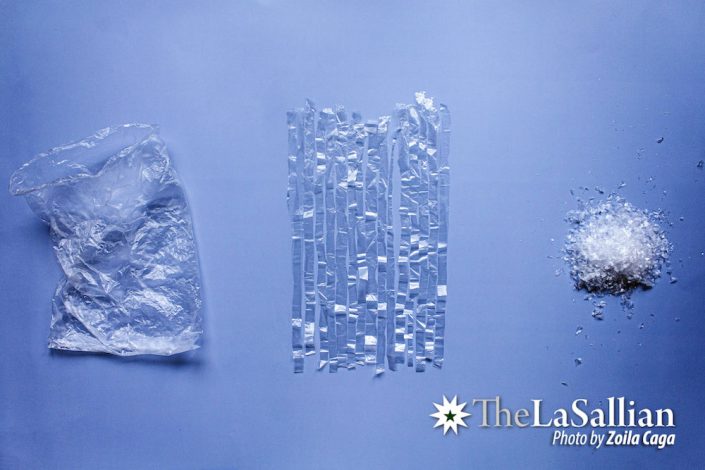
The ubiquity of microplastics in our environment presents a growing concern. Such is the breadth of the issue that microplastics have now reached Mount Everest, one of the most remote places on Earth. These miniscule particles can now be found even inside the stomachs of animals and consequently, humans.
Though tiny plastic particles are one of the most pervasive types of plastic pollution, they remain understudied, especially in the Philippines, despite the country being one of the top contributors to plastic waste.
Descending the iceberg
Plastic pollution has brought about the grim reality of ecological destruction. In response, humanity has come up with studies, programs, and legislation that aim to limit plastic usage and production.
Geri-Geronimo Sañez, chief of the Hazardous Waste Management Section of the Department of Environment and Natural Resources, emphasized that the current problem is an extension of plastic waste and “solutions” such as biodegradable plastics.
To demonstrate this, he brought up synthetic fabrics as an example. Everyday objects such as clothes, beds, and ropes are usually made from synthetic fabrics such as polyester or nylon which are known to shed innumerable non-biodegradable microplastics—and perhaps even nanoplastics.
Beyond this, he mentioned that many “biodegradable” plastics simply break down into microplastics that are unable to degrade any further. With this, it becomes important to understand and ask the effects of microplastics on human health and on the environment.
The path to understanding
Beyond human health, microplastics threaten all kinds of animal species as they are easily ingested and inhaled. As proven by different studies, animals that have ingested or inhaled microplastics suffer a range of effects including damage to internal tissues and organs.
There have also been notable studies on their effects on human health—some of which reveal that microplastics are linked with problems such as inflammation and increased cancer risk.
According to an article from National Geographic, it is difficult to fully understand their effect on humans due to the difference in behavior between plastics and additives, especially “as creatures along the food chain consume, metabolize, or excrete them.”
For Sañez, the lack of viable alternatives and proper waste management should be addressed among other issues involving microplastics. While the urban waste collection services cover the whole country, waste segregation and enforcement of ordinances vary among cities.
This leads to all kinds of pollution—air pollution, marine litter, and plastic pollution. It starts with “the individual and their values, culture, and attitude towards plastic,” Sañez emphasizes. Some replace plastic with environmentally friendly alternatives like paper bags, but there are instances wherein plastic is the only viable option.
Although information regarding the true extent of the infiltration of these microplastics in our environment may be scarce, one study looked into the microplastic contamination along the Bombong river and the coast of Ticalan, Batangas, and found a considerable amount of microplastics in coastal regions. A particularly worrying set of data revealed that, from a sample of 36 fishes, a total of 51 pieces of microplastics have been identified.
Knowing that the economic wealth of the Philippines relies on rich and healthy marine ecosystems, along with the lack of viable alternatives and preventative measures in the country, Sañez advocates more studies on microplastics. This is despite the fact that they require “extensive time and resources, and needs [sic] more awareness because it is a new issue, especially in the Philippines.”
